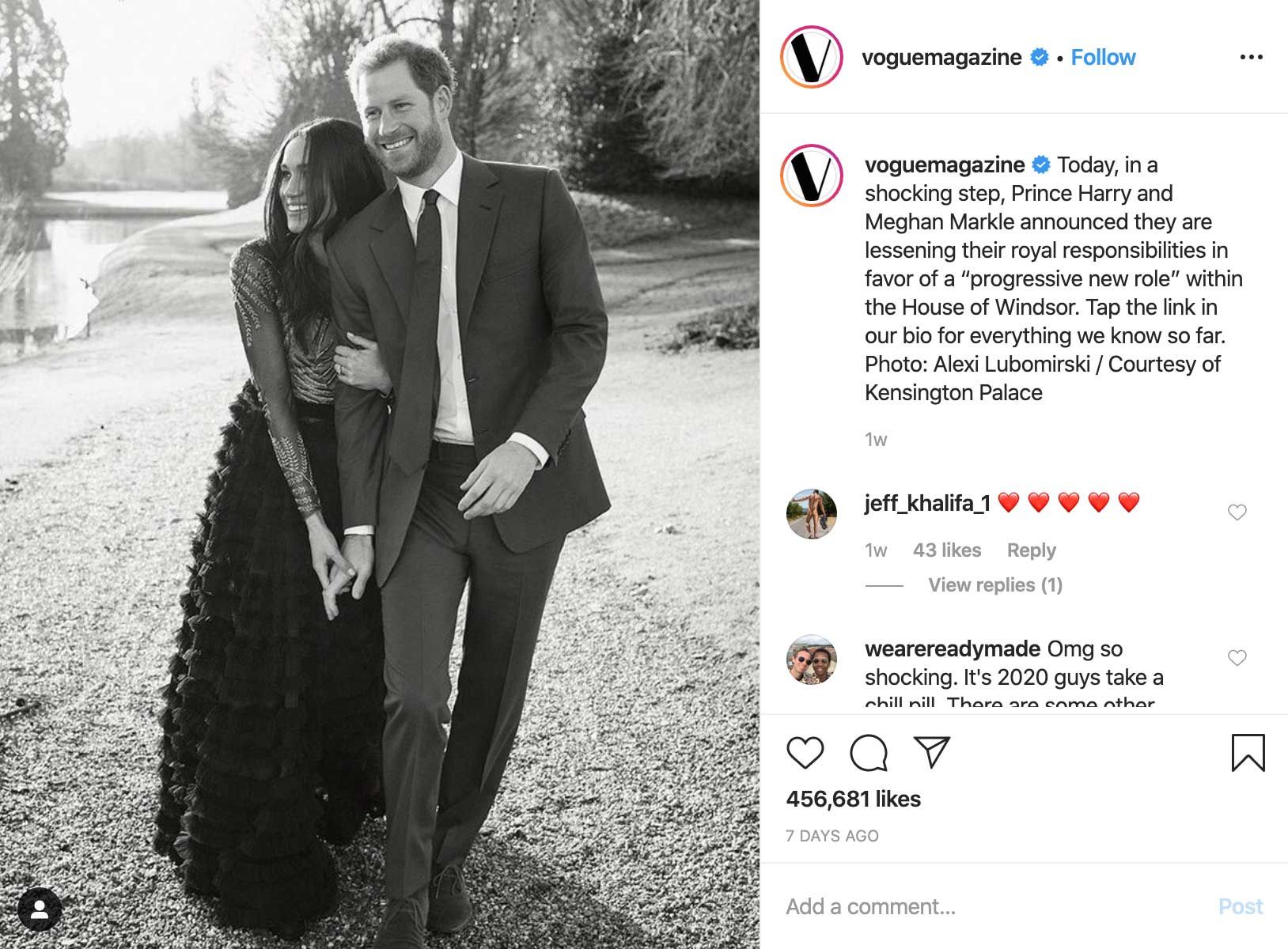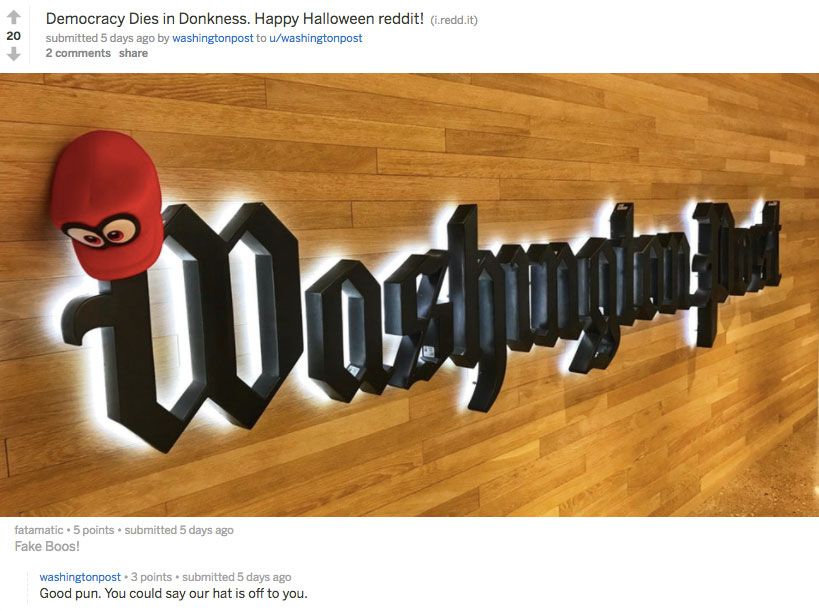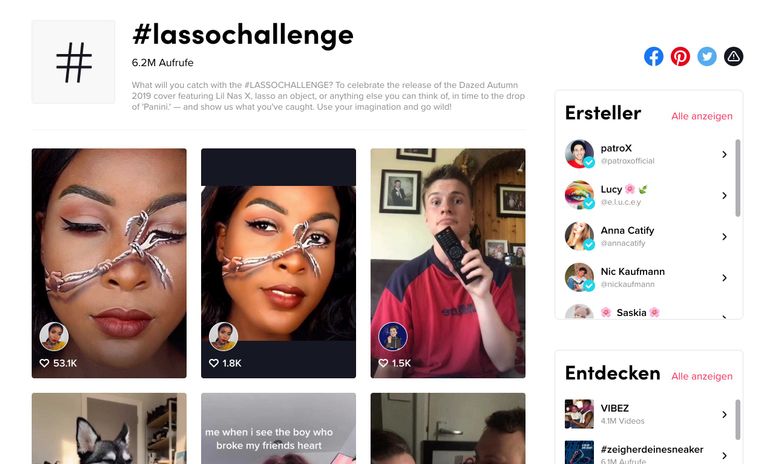
Our top tips to ace your Awards entry
You’ve done the hard work – now you’re only a few simple steps away from industry recognition.
PPA Blog
PPA Blog
One of the most significant changes in publishing centres on the rise of social media. These platforms have become extremely important tools in keeping consumers informed about the world around them. As a result, consumers of all ages have moved away from traditional sources of media and have allocated more of their news-gathering time to social media.
Ultimately, I believe publishers of all shapes and sizes must not only recognise the power of social media, but properly leverage it in order to better connect with their audiences.
Therefore, in this article, I want to dive into five promising social media platforms and how publishers can best leverage them. In the end, you will have several actionable insights so that you can take even more advantage of these game-changing platforms.
1 Instagram
One of the most popular social networks in the world, Instagram isn’t just a photo-sharing app anymore. Your media organisation has the opportunity to leverage the power of Instagram to deliver content to a passionate, engaged audience.
Current Figures
While nearly everyone knows what Instagram is and how it works, Instagram’s growth and daily usage rate continues to be impressive. This is especially true for magazine publishers. According to a study by the Association of Magazine Media, Instagram has had the highest growth rate among the social networks that it tracked over several years. During the second quarter of 2019, the Association found that magazines in total had a 6.3% increase in follower growth on social media, representing millions of new followers.
Beyond this overarching number, publications like The New Yorker (6% increase to 3.4M), New York Magazine (also 6% increase to 1.5M), and The Economist (13% increase to 3.5M) have notched impressive gains in their follower counts. In comparison, these magazines’ follower counts on platforms like Twitter and Facebook were negligible.
Whether publishers are taking advantage of Instagram stories or short video clips of their reporting, Instagram’s visual nature offers compelling opportunities for all publishers.
Best Practices
One of the most notable publishers to take advantage of Instagram is Vogue. Specifically, the magazine has leveraged Instagram Stories to bring readers closer to its original content. Vogue is such a masterful user of Instagram that it generated an average of 6.4 million likes or comments per month in 2018.
So you may be asking yourself: How does Vogue do it?
One of its most powerful tactics has been to use multiple Instagram accounts to promote its fun and laid back Instagram Stories. Specifically, Vogue has 11 different Instagram accounts and provides more fluid and community-focused Instagram Stories to its audience. And while these Stories aren’t as rigid or curated as those found in Vogue’s print copies, they have _Vogue_’s quintessential style and professionalism.

Some sample Stories include _Vogue Plus One_, _Vogue First Look_, and _Vogue Backstage_, which are laser-focused on providing value and entertainment to its community.
The end result has been stellar. Vogue tripled its traffic and achieved a 40% higher conversion rate through ads on Instagram stories compared to alternatives. Stories even helped the magazine sell out its September issue. After all, Vogue’s success with Instagram shows how the platform can generate a significant ROI for your business.
2 Snapchat
While not as popular as other social media platforms, Snapchat remains a terrific option to connect with your audience.
Current Figures
Snapchat may not have as much buzz as it did prior to its IPO, yet publishers continue to use it as part of their digital marketing strategy. In fact, according to a Digiday study, 55% of the surveyed publishers are profiting off of Snapchat. Even more striking is the fact that 65% of them consider Snapchat to be a significant revenue driver for their companies.
Ultimately, Snapchat is still an excellent way to reach a young audience. The company continues to release new features like Curated Our Stories that help publishers create and distribute compelling content to their audiences.
The stock price has also responded in kind, with Snapchat shares nearly tripling since the beginning of 2019.
Best Practices
Two publishers that have masterfully leveraged Snapchat are CNN and The Economist.
Let’s start with CNN. It moved quickly to take advantage of Snapchat’s Curated Our Stories to cover the 2019 fire at Notre Dame Cathedral. With the new feature, CNN was able to get access to users’ posts when creating its own live Snapchat Stories. Because the visuals of the story were so important, CNN jumped in and gathered unique, first-person perspectives of the fire. Even though the company hasn’t released its viewership numbers for that specific story, it is estimated that between five and twenty million viewers tuned in.
“Launching on Snapchat has resulted in the biggest step-change in the audience of The Economist since 1843.”
Tom Standage, Deputy Editor and Head of Digital Strategy of The Economist
As for _The Economist_, it has been experimenting with Snapchat since 2016. Its Snapchat content has covered everything from North Korean threats to the possibility of alien life. It racks up an average of 7.1 million visitors to its Snapchat channel per month and sees the platform as a terrific way to engage with a young audience.

A typical Snapchat post by The Economist.
Also, rather than talk down to this young audience, The Economist presents its high-quality reporting in an extremely compelling way.
3 YouTube
YouTube is a true juggernaut of social media, presenting outstanding opportunities for your media business.
Current Figures
Being the second most-visited website on Earth, YouTube is a terrific platform for publishers who want to reach a niche or global audience. The statistics are staggering. YouTube is responsible for 37% of all mobile Internet traffic, contains 1.9 billion logged-in monthly users, and reaches more 18 to 49-year-olds than any broadcast or cable television network. Publishers also see the opportunities with YouTube, as 30% feel that the platform offers the most meaningful long-term revenue opportunities, ahead of Facebook and Google AMP.
Best Practices
The Guardian is one of many publications that has achieved great traction with YouTube. It has already racked up one million YouTube subscribers and over one billion minutes in total watch time. The Guardian has done this by joining YouTube’s Players for Publishers program and focusing on creating compelling, long-form videos. Some of these videos include a franchise on how U.K. politics impact people beyond London’s politicians and a sex trafficking documentary called The Trap.
The Trap has already more than 7 million views on YouTube.
The Guardian has eight team members solely focused on creating videos for YouTube and The Guardian’s homepage. Through the Players for Publishers program, The Guardian is able to use YouTube’s player on its own site, which allows them to control ad sales and keep all revenue.
4 Reddit
Reddit may be an unconventional choice, yet this growing platform lets all different types of publications build extremely close connections with their audiences.
Current Figures
Even though it may not be well-known, Reddit is the fourth-most visited website on the Internet. The Reddit community has 330 million active users per month and is known for having strict rules for all of its members. This self-proclaimed “Front Page of the Internet” is a great way to connect with your viewers and readers, yet the community frowns on excessive types of self-promotion.
Best Practices
The Washington Post has been able to leverage Reddit in an extremely compelling and effective way. Back in 2017, the Post created a public profile on the social network. Gene Park, the Post’s Social Media Editor, explained that the paper created a Reddit profile similar to how a creator would on the platform. The ultimate goal was an engagement play rather than a traffic play.

The Post has certainly succeeded. It has prioritised consistent transparency and the willingness to honestly participate in ongoing conversations. The Post uses Reddit to contribute to ongoing conversations about politics, business, and other areas it covers while also providing an inside look at the Post’s original content.
What earned respect among Reddit users was the paper’s strong commitment to honesty on the platform. Park highlighted that many users are vocal about becoming their readers due to this kind of authentic engagement.
5 TikTok
Finally, TikTok is a newer platform, yet this extremely engaging app can be an unconventional way to reach your audience.
Current Figures
2019 was the year that TikTok exploded from a fun social network into one that can create interesting revenue opportunities. The app hit about one billion downloads in 2019 and has an even bigger 2020 in store. Engagement levels within the app are quite high, as users spend approximately 52 minutes per day on the platform.
Like Snapchat, TikTok’s user base is still very young, with two-thirds of its users being younger than 30 years old. While the app has received increased scrutiny from U.S. lawmakers, it continues to be one of the most exciting apps in social media.
Best Practices
Because TikTok is so new, many publishers have adopted a wait-and-see approach. To put it simply, this is a symptom of publishers feeling wary about a platform that is working to establish itself.
However, not all publishers have remained on the sidelines.

Dazed invented the #LassoChallenge on TikTok to help promote one of its autumn editions.
For instance, culture magazine Dazed has used TikTok as the home of a #LassoChallenge campaign to promote one of its print issues. NBC has expanded its Stay Tuned show from Snapchat to TikTok, uploading 63 videos so far. Buzzfeed, Hearst, and Vice have also experimented with TikTok.
“On social, the audience isn’t an observer but participator; we’re thinking about how can we get them to participate.”
Ahmad Swaid, Head of Content at Dazed Media
These publishers haven’t devoted many resources to the platform yet, but they have launched experiments to see what their followers like. As just one example, Vice has experimented with daily short-form videos that leverage its popular Munchies content.
Conclusion
While any of these social media platforms can help you connect with your audience and achieve your business goals, it is still most critical to know your audience.
Journalism has the potential to become more personal and more direct than any time in history, but publishers must leverage these technologies in a way that serves the consumer. Just because all of these tools are available to you, doesn’t mean that you should use every single one.
In sum, remember that social media can be a double-edged sword. It is a useful sword nonetheless. By knowing your audiences, recognising the power of each platform referenced above, and choosing the best-fitting platform for your audiences, you will get an extreme amount of value from these platforms.

You’ve done the hard work – now you’re only a few simple steps away from industry recognition.

Denmaur Independent Papers has announced it has finalised the purchase of the business and assets of the Fine Paper and Conversion division from Middleton Paper Company Ltd.
Chancery House, 53-64 Chancery Lane, London WC2A 1QS

If you have a member login, enter your details below. Please note, that your login is for PPA.co.uk only and not for our event sites.
If you are a member but don’t have an account yet, you can setup your account here.
Any problems, please contact membership@ppa.co.uk.